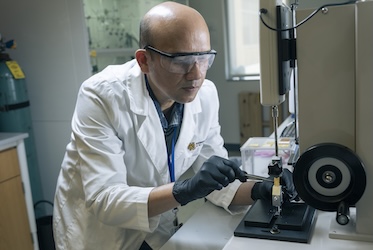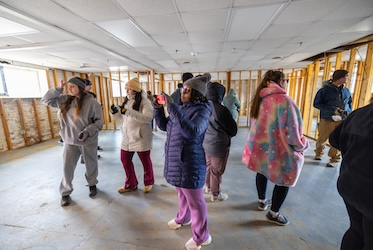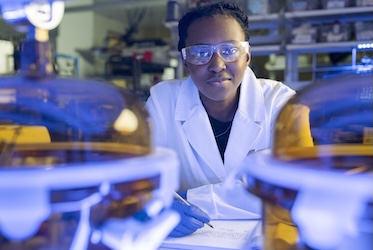
Kennesaw State statistics students crunch emergency response data
KENNESAW, Ga. | Feb 26, 2018
Study helps Cobb County Fire Department reduce travel times
In a unique collaboration with local firefighters, Kennesaw State University graduate statistics students – using advanced statistical software and Google Maps – analyzed five years of emergency response data to potentially reduce trip times.
The Cobb County Fire Department asked KSU’s Department of Statistics and Analytical Sciences for help in making sense of a huge amount of data. The information covered several years of emergency responses. The pro bono project, which launched in January 2017, covered 29 fire stations and their corresponding 272 fire zones, which averaged 168 incidents a day.
When the study began, the department’s 8-minute emergency response time was double the National Fire Protection Association’s 4-minute standard. At issue was whether a careful analysis of the data could lead to ways to improve emergency vehicles’ travel times.
An influx of people during the past five decades had turned the mostly rural county into a thriving suburban community. In 1970, the county had fewer than 200,000 residents versus almost three-quarters of a million residents today. Along with explosive population growth, the area has experienced traffic congestion.
“Getting emergency vehicles to an incident is critical in saving lives and property,” said Joe DeMaio, professor of mathematics and data science, who headed up the project with assistance from Gene Ray, director for the Center of Statistics and Analytical Research, and Kurt Schulzke, associate professor of accounting.
“The aim of the study was to look for ways to reduce the fire department’s response time by focusing on the travel times of their various emergency vehicles,” DeMaio said.

Students in the Ph.D. in Analytics and Data Science program – Bogdan Gadidov, Yan Wang, Lili Zhang and Yiyun Zhou – conducted the yearlong research as part of their degree program.
The team investigated how certain fire zones and stations could be realigned to reduce travel times by analyzing historical response time data from September 2011 to August 2016. The city of Marietta, which maintains its own fire department, was not part of the project.
“Google Maps data was used to analyze the geography, roadways and traffic congestion of the county,” said Gadidov. “We studied four different times of the day: morning, afternoon, evening and overnight.”
The students said working with actual data, rather than a textbook problem, gave them a real connection with the community.
“The main reason I chose this project is that it benefits all of the people in Cobb County,” said Zhang. “That was very rewarding.”
By using Google Maps to check the response times from neighboring fire stations, the group tried to determine if a different fire station could have responded more quickly to the same incident. It was determined some fire zones could be reassigned to different fire stations to reduce future traveling times.
Another possible solution would be to subdivide fire zones and assign the resulting areas to different stations. In the event that a fire station is busy and has no vehicles to send to an incident in one of its zones – or if an incident is so large that additional fire stations are needed – a list of backup fire stations for each fire zone could be created using the Google Maps simulation.
Results varied for each fire station, but the research showed room for improvement. The group plans to review the results with fire officials next month before embarking on the second phase of the study, which could pinpoint specific operational areas.
The group used Python, a general-purpose programming language, to connect to the Google Maps Distance Matrix API. That’s the service that provides travel distance and time for a matrix of origins and destinations. The resulting data was then processed through SAS, a statistical programming language, to arrive at the conclusions.
– Robert S. Godlewski
Photo by David Caselli
Related Stories

Kennesaw State researcher tackling sustainability through use of transparent wood

Kennesaw State architecture, engineering students reimagine Asheville's devastated River Arts District

First-year Kennesaw State student, author recognized as versed local historian

Chemistry student engaged in sustainable catalyst research through Kennesaw State's First-Year Scholars program
A leader in innovative teaching and learning, Kennesaw State University offers undergraduate, graduate, and doctoral degrees to its more than 47,000 students. Kennesaw State is a member of the University System of Georgia with 11 academic colleges. The university’s vibrant campus culture, diverse population, strong global ties, and entrepreneurial spirit draw students from throughout the country and the world. Kennesaw State is a Carnegie-designated doctoral research institution (R2), placing it among an elite group of only 8 percent of U.S. colleges and universities with an R1 or R2 status. For more information, visit kennesaw.edu.














